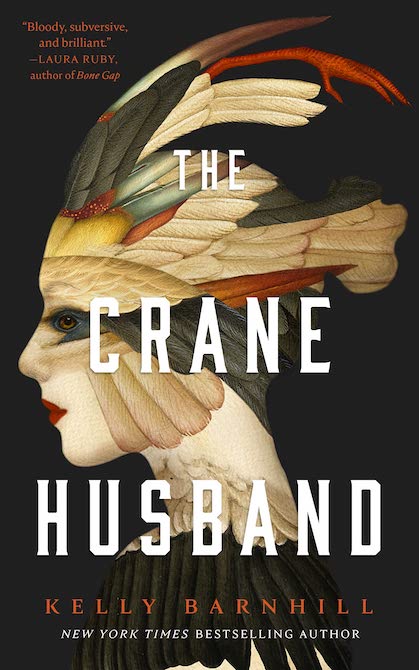Thanks to the comments on my introduction to the Werewolf chapter of the SFF Bestiary, I opted to begin the series of readings with the second of Jim Butcher’s supernatural detective novels starring Harry Dresden. Fool Moon offers a whole gamut of types and styles of werewolf. Each has its own magical rules and manifestations. They all converge on Chicago, and on Chicago’s resident wizard.
It’s rather brilliant. The story stands on its own, though there are references to the events of the previous novel, and hints of further discoveries and mysteries to come. This is pretty much standard for a detective series: there’s the main puzzle that drives the individual book, and the detective’s own larger story that opens up as the series evolves.
The cast of characters is likewise standard, but in a good way. They’re nicely done, and they work well both with and against each other. Harry is a classic slightly seedy private eye. He drives a clunker of a car, and he works mostly alone. His foil is the petite blonde police detective, Lieutenant Murphy, who heads an X-Files sort of department. There’s a cast of lesser characters including a gorgeous reporter for a paranormal newspaper, with whom Harry has history, and a crime boss who keeps trying to get Harry to work for him. And of course there’s a dive bar that caters to the supernatural trade, because what’s a private eye without a dive bar?
The mystery of the month is a series of ghastly murders. It’s clear early on that there must be werewolves involved; the evidence is difficult to miss. A motive (though not necessarily the motive) starts to emerge fairly soon as well. What keeps the plot spinning, and Harry with it, is the question of who is behind it all, and why.
There’s not just one werewolf or pack of werewolves slaughtering random persons (or are they random?) around the full moon. Harry gets a crash course in the different varieties. Some end up working with him, though the alliance is uneasy at best. Others do their best to rip him apart.
The Alphas are wolf shifters. They transform into more or less wolfish form, but keep their human minds and personalities. In their fully human form they’re a gang of nerdy college kids.
The Streetwolves are the reverse. They’re lycanthropes: humans who remain in human form, but whose minds abandon human reason and succumb to raw lust for blood and violence. When under the influence of the wolf-rage, they have enhanced physical senses, and superior strength. They’re a biker gang when they’re not a wolfpack.
Another, smaller pack, the Hexenwolves, become wolves through the powers of a magical belt. The belt acts on them like a drug. They become addicted to the rush of the change; over time, the arrogant, amoral, superpowered wolf overcomes the human personality. They’re serial killers, and they live for the thrill of the kill.
Most powerful and dangerous of all is the loup garou. This is the man who comes a monstrous wolf-creature on the night of the full moon. It’s a literal curse, and it’s hereditary, laid on his family centuries ago. When he’s human, he’s a good man, with good intentions. When the curse is on him, he’s a ravening beast, a relentless killer who exists solely to rend and devour any living thing he meets.
He has no power over either the change or the compulsion to kill. He can be contained within a magical circle, but if the circle is broken, nothing can stop him but a very particular kind of silver. This is the closest analogue to the Wolf Man of the Lon Chaney, Jr. film, with considerably more specific timing of the curse: one night in every lunar cycle.
Buy the Book


The Crane Husband
The other types of werewolf are not so strictly bound to the phase of the moon. Hexenwolves for example can shift at will as long as they’re wearing the belt. The longer they wear it, the harder it is to resist the urge to change.
One more type of wolf shifter is revealed late in the story. That’s the one I was hoping most to see, and it’s well done. The rest shift from human into wolf. This is wolf to human.
They don’t truly present as human, despite a human appearance; their mind works differently, a difference that Harry picks up on from the first. It’s one of the mysteries he has to solve. Who is this person, and what they want? And can they be trusted?
I had a lot of fun with this, despite some irritation with Harry’s episodes of plot-stupidity. For a professional wizard, he’s awfully naïve, and some of the gaps in his knowledge are a little too wide. But he wakes up to some of it, and he’s clearly capable of learning as he goes. He’s wiser at the end than at the beginning.
And the werewolves. So many werewolves, of so many kinds. Real wolves, wolf-men (and women), monsters in more or less wolf form. All different, and all coming together into a grand tangle of a plot. It sorts out in the end, though not every character survives.
I’m glad I started with this. It’s a great general introduction to the range and variety of the species. It’s a rip-roaring adventure, too, and a pretty decent murder mystery. More conventional detective stories will seem tame after this, without a menagerie of monsters and a few good blasts of magic.
Judith Tarr is a lifelong horse person. She supports her habit by writing works of fantasy and science fiction as well as historical novels, many of which have been published as ebooks. She’s written a primer for writers who want to write about horses: Writing Horses: The Fine Art of Getting It Right. She lives near Tucson, Arizona with a herd of Lipizzans, a clowder of cats, and a blue-eyed dog.














